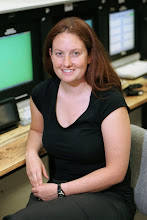British mathematician Charles Dodgson published nonsense fiction under the pseudonym Lewis Carroll. The fantastically absurd adventures of Alice in Wonderland are filled with Dodgson’s rants against the radical new math ideas appearing in Victorian universities.
Dodgson was a conservative, cautious mathematician who tutored at Oxford to earn extra income. He faithfully followed the principles laid out by Greek mathematician Euclid in the textbook Elements. You probably remember Euclid’s rigorous reasoning from your high school geometry class: start with accepted truths (axioms), use logical steps to build increasingly complex arguments, and sign off the mathematical proof with the Latin acronym Q.E.D. (for quod erat demonstrandum, or “that which was to be demonstrated").
You studied symbolic algebra in high school, but it was an emerging concept in Victorian times. Under the rules of arithmetic, if I have one apple and you give me two more, then I have 1 + 2 = 3 apples. With the power of algebra, we can think of apples as variables. So, x is number of apples I have, and you give me two more every day, so on any given day, I have x + 2*y apples, where y is the number of days that have passed. Variables are very useful but they are abstract. As abstract, say, as the Cheshire Cat disappearing gradually until nothing is left but his grin. Alice remarks that she has often seen a cat without a grin but never a grin without a cat, which is a commentary on this new abstraction in math.
The concept of imaginary numbers was once a radical idea. We all know that 2 * 2 = 4 and -2 * -2 = 4. So the square root of 4 is √4 = ±2. But what if we want to take the square root of a negative number? The square root of -4 doesn’t exist. So, we invent the imaginary number i, define it as i² = -1 and now we can solve the problem that had no answer. √-4 = √-1 * √4 = 2i. Just use the imaginary number i and now it works! You will have to accept the concept of i to pass American high school math standards, but Charles Dodgson was a traditionalist who wrote Alice in Wonderland to satirize absurd concepts like these.Irish mathematician Sir William Rowan Hamilton took this imaginary number nonsense to an entirely new level by inventing quaternions.The complex number 2i has a real part (the number 2) and an imaginary part (i).Quaternions extended complex numbers into four parts instead of two. The algebraic properties like x + y = y + x do not apply to quaternions. Dodgson was understandably frustrated with new math that violated the commutative property!Enter the Mad Hatter and his tea party. Alice is at a dinner party with three strange characters who have kicked the fourth character (Time) out of the room. Mathematician Hamilton could only describe rotations in a single plane (the movement of the characters around the dinner table) until he introduced the fourth variable of Time to his quaternion logic. When the Hatter tells Alice that “I see what I eat” is not the same thing as “I eat what I see,” he is telling her that the commutative property does not apply here. In this world, x times y is not the same as y times x! When the scene ends, two of the characters are trying to stuff the third into a teapot, so they can get out of this endless rotation and go back to being a complex number with just two parts.
Alice in Wonderland is Charles Dodgson’s satire of what he perceived to be semi-logic among his mathematical contemporaries. His fiction takes the new abstract math concepts to their logical conclusions using Euclid's rules for mathematical proofs, with sometimes mad results. In the chapter Pig and Pepper, Dodgson uses French mathematician Jean-Victor Poncelet’s continuity principle to turn a baby into a pig, demonstrating the absurdity of modern projective geometry. Dodgson’s lesson to Alice? Follow the rules of Euclid’s geometry to survive in Wonderland. Keep your ratios constant, even if your size changes after eating mushrooms with the Caterpillar.
Learn more:
The NPR story which first introduced me to Lewis Carroll as Charles Dodgson, mathematician
Melanie Bayley's PhD dissertation on Alice's Adventures in Algebra
Subscribe to:
Post Comments (Atom)


I very much enjoyed reading this piece.
ReplyDeleteHow come I never got a link to this blog (and this entry) before? This is marvelous stuff, and I am so delighted to learn something new about stodgy old Dodgson.
ReplyDelete